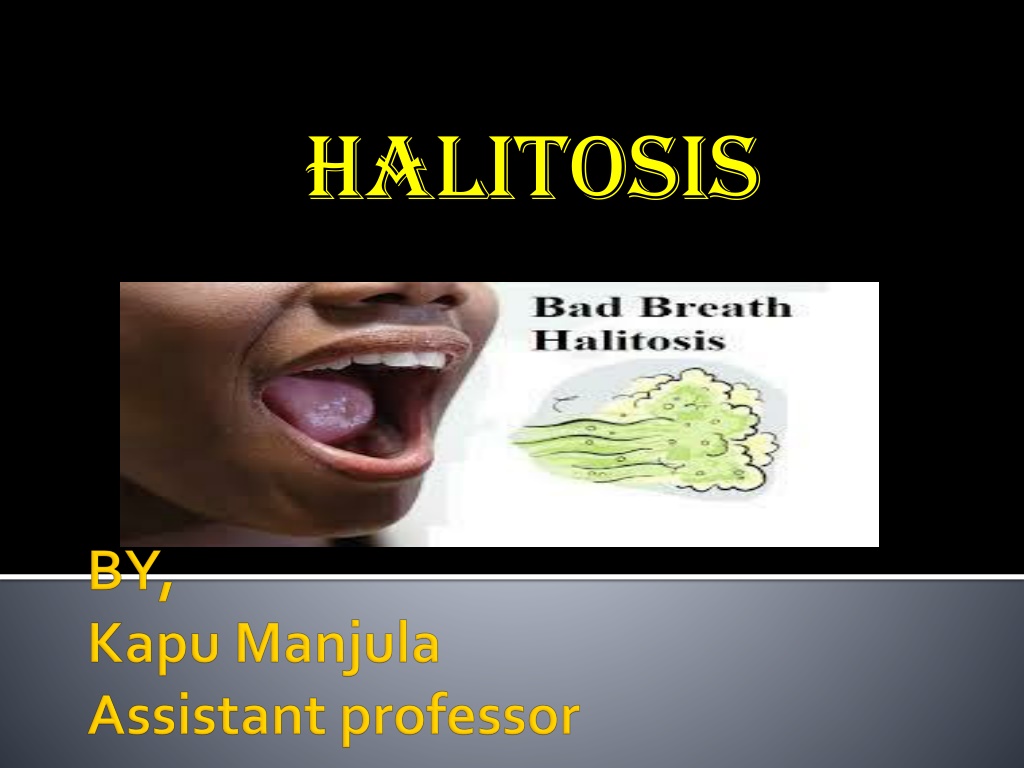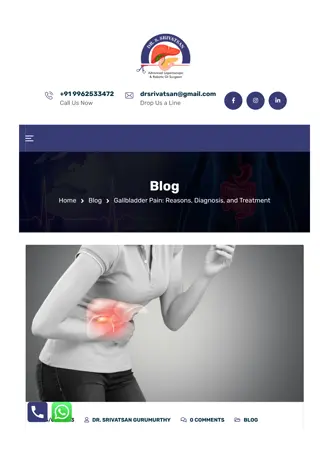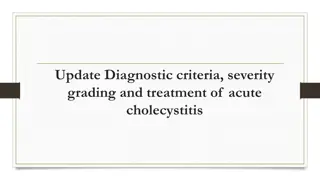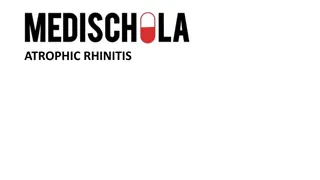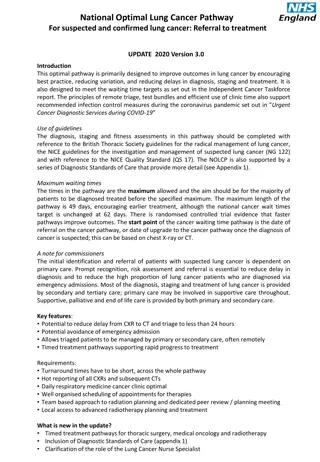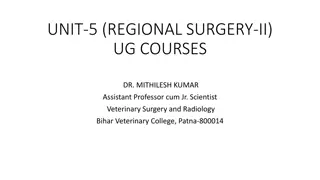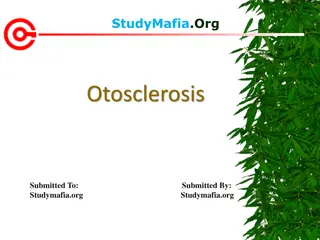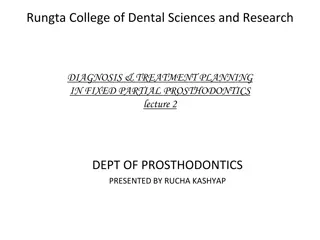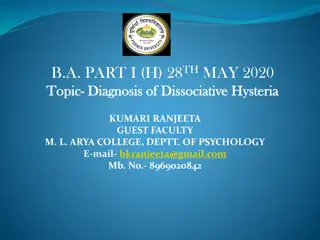Understanding Halitosis: Causes, Diagnosis, and Treatment Options
Halitosis, also known as bad breath, is characterized by an unpleasant odor in exhaled breath. It can be caused by factors such as certain foods, tobacco products, poor dental hygiene, oral diseases, sinus infections, and more. Self-diagnosis methods include licking the back of the wrist and using a Halimeter to monitor sulfur emissions. Treatment options include maintaining proper oral hygiene, eating healthy foods, and visiting the dentist regularly to address underlying dental issues. Additional medical check-ups may be needed to rule out other potential causes like GERD, renal diseases, and diabetes.
Download Presentation

Please find below an Image/Link to download the presentation.
The content on the website is provided AS IS for your information and personal use only. It may not be sold, licensed, or shared on other websites without obtaining consent from the author. Download presentation by click this link. If you encounter any issues during the download, it is possible that the publisher has removed the file from their server.
E N D
Presentation Transcript
HALITOSIS IS ALSO CALLED A BAD BREATH. IT IS NOTICEABLY UNPLEASANT ODOUR PRESENT IN EXHALED BREATH
FOOD-onions, garlic, fish, cheese & spices Tobacco products: smoking Poor dental hygiene Oral diseases-oral abscess, peridontal disease, gingivitis, dental caries, oral ulceration, dry mouth Nose & Sinuses-sinus infection, foreign body in nostrils, chronic rhinosinusitis
Other causes-tonsillitis, hiatalhernia,GERD, liver failure Lower respiratory tract infection ( Bronchial and lung infection) Renal failure or renal infection DM(Smell of acetone on breath)
1. Self diagnosis: a) Lick the back of the wrist, after drying of saliva smell it, but this results in over estimation of halitosis b) with the help of plastic disposable spatula 2.Halimeter: used to monitor the level of sulphuremissions. Certain food( garlic,onions) and alcohol produce smell,considerit
3.Gas chromatography: This machine measure the presence of volatile sulphur compounds (VSCs) Eg: Hydrogen suphide, methyl mercaptan and dimethyl sulfide 4. Sniffing of Bad odour can be done
Person should be advised to gently clean tongue surface. Maintain proper dental hygiene by brushing, flossing, cleaning of dentures Eat healthy break fast with rough foods as it clean the back of tongue Advice patient to chew sugar free gum Advice patient to stop smoking & alcohol
Advice patient to visit to the dentist regularly to cure all dental problems(i.e. caries, abscess, periodontal diseases) Advice the patient for proper check uptorule out any other diseases like GERD,renal diseases and diabetes etc.
Glossitis is a condition in which the tongue is swollen and changes color. Finger like projections on the surface of the tongue(Papillae) are lost, causing the tongue to appear smooth.
1. Benign migratory glossitis 2. Hunter`s glossitis 3. Median rhombdoidglossitis 4. Idiopathic glossitis 5. Herpetic geometric glossitis
Annular areas of desquamation of the filiform papillae on dorsal part of the tongue Pinkish-red central lesions having thin, yellowish lines of bands Patterns and locations are changed after every few days.
Characterized by pain and burning sensation but can also extend to the other parts of the oral mucosa Finally tongue is tranformed to atrophic and has red color shiny appearance Small ulcers spread over the surface called as atrophic glossitis
Congenital disorder of non inflammatory origin having rhombdoid reddish,smooth shiny lesions along with opalescent spots These occur in the central third of the dorsal surface of the tongue
Inflammation on the surface of the tongue and its mucous membrane
Painful, longitudinal, crossed or branched fissure on the dorsum of the tongue
Bacterial or viral infections Mechanical irritation or injury from burns ,rough edges of teeth or dental appliances or other trauma Exposure to irritants such as tobacco,alcohol,hotfoods or spices Allergic reaction to tooth paste,mouth wash,plasticin dentures
Disorders such as iron deficiency anemia,perniciousanemia and other B- vitamin deficiency syphilis and other yeast infection Dry mouth associated with CT disorders
Inflammation and swelling of tongue Smooth appearance to the tongue Tongue color usually dark beefy red Ulceration Faieryred if caused by vitamin B deficiency Sore and tender tongue White patches or smooth areas Difficulty with chewing, swallowing or speaking
DENTAL EXAMINATION Swollen tongue,patchesof swelling
GOAL-Reduce is to reduce the inflammation Treatment usually does not require hospitalization until tongue swelling is severe Good oral hygiene-tooth brushing and flossing Dietary changes and supplements are used to treat anemia and nutritional deficiency Avoid irritants such as hot and spicy foods,alcoholand tobacco to reduce discomfort
Mouth rinses with half tea spoon of baking soda and 8oz of warm water can provide relief. Corticosteroids such as prednisone may be given to reduce swelling of glossitis For mild cases,topicalapplications recommend to avoid side effects of swallowed or injected cortico steroids
Antibiotics, antifungal medications or other anti microbialsmay be prescribed if cause is infection. Anemia and nutritional deficiencies may be treated often by dietary changes or other supplements Avoid irritants to minimize discomfort
Good oral hygiene Regular dental examination Minimize irritants or injury in the mouth when possible Avoid excessive use of any food or substance that irritates the mouth or tongue.
